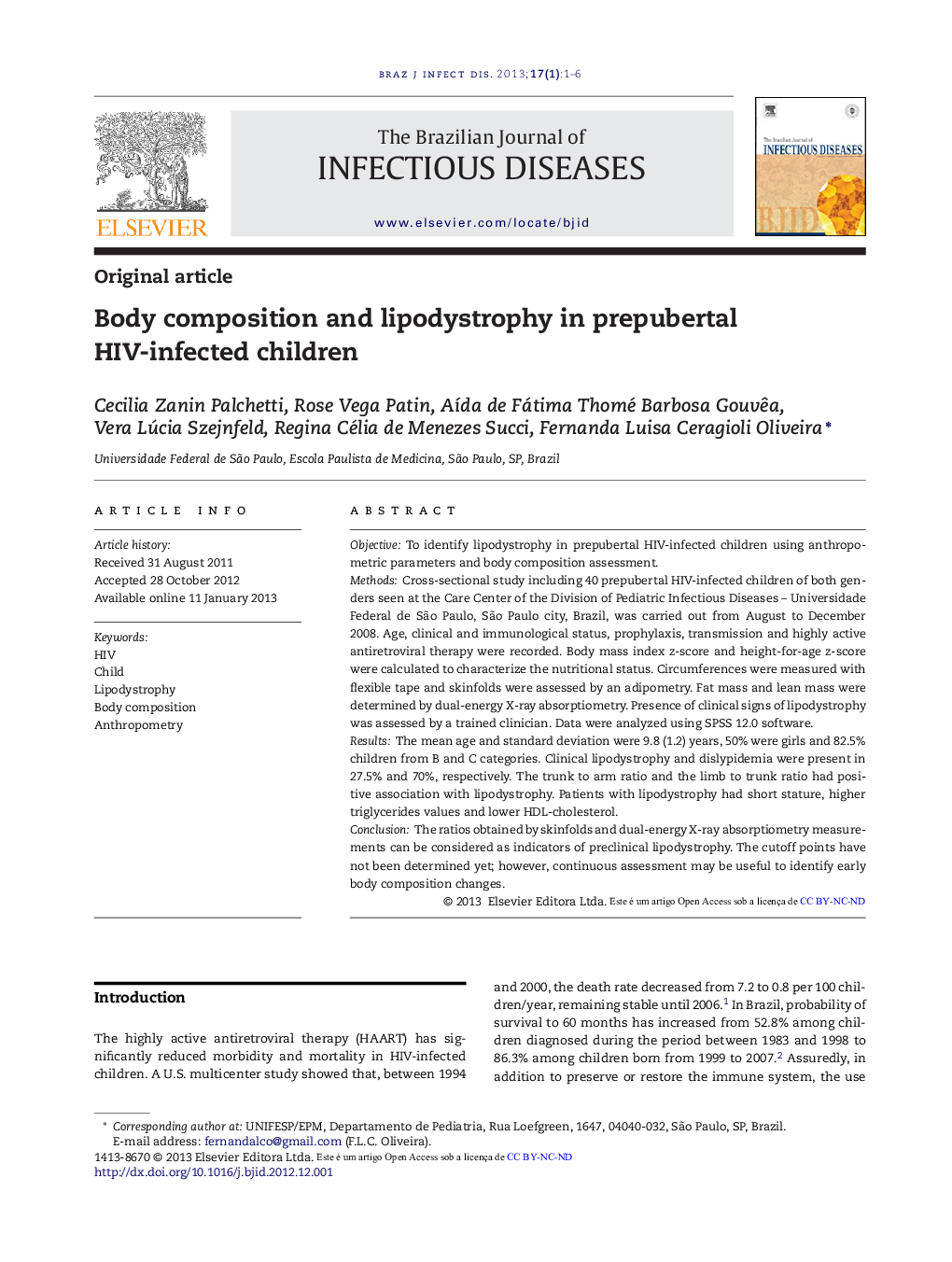| Article ID | Journal | Published Year | Pages | File Type |
|---|---|---|---|---|
| 3344167 | The Brazilian Journal of Infectious Diseases | 2013 | 6 Pages |
ObjectiveTo identify lipodystrophy in prepubertal HIV-infected children using anthropometric parameters and body composition assessment.MethodsCross-sectional study including 40 prepubertal HIV-infected children of both genders seen at the Care Center of the Division of Pediatric Infectious Diseases – Universidade Federal de São Paulo, São Paulo city, Brazil, was carried out from August to December 2008. Age, clinical and immunological status, prophylaxis, transmission and highly active antiretroviral therapy were recorded. Body mass index z-score and height-for-age z-score were calculated to characterize the nutritional status. Circumferences were measured with flexible tape and skinfolds were assessed by an adipometry. Fat mass and lean mass were determined by dual-energy X-ray absorptiometry. Presence of clinical signs of lipodystrophy was assessed by a trained clinician. Data were analyzed using SPSS 12.0 software.ResultsThe mean age and standard deviation were 9.8 (1.2) years, 50% were girls and 82.5% children from B and C categories. Clinical lipodystrophy and dislypidemia were present in 27.5% and 70%, respectively. The trunk to arm ratio and the limb to trunk ratio had positive association with lipodystrophy. Patients with lipodystrophy had short stature, higher triglycerides values and lower HDL-cholesterol.ConclusionThe ratios obtained by skinfolds and dual-energy X-ray absorptiometry measurements can be considered as indicators of preclinical lipodystrophy. The cutoff points have not been determined yet; however, continuous assessment may be useful to identify early body composition changes.
